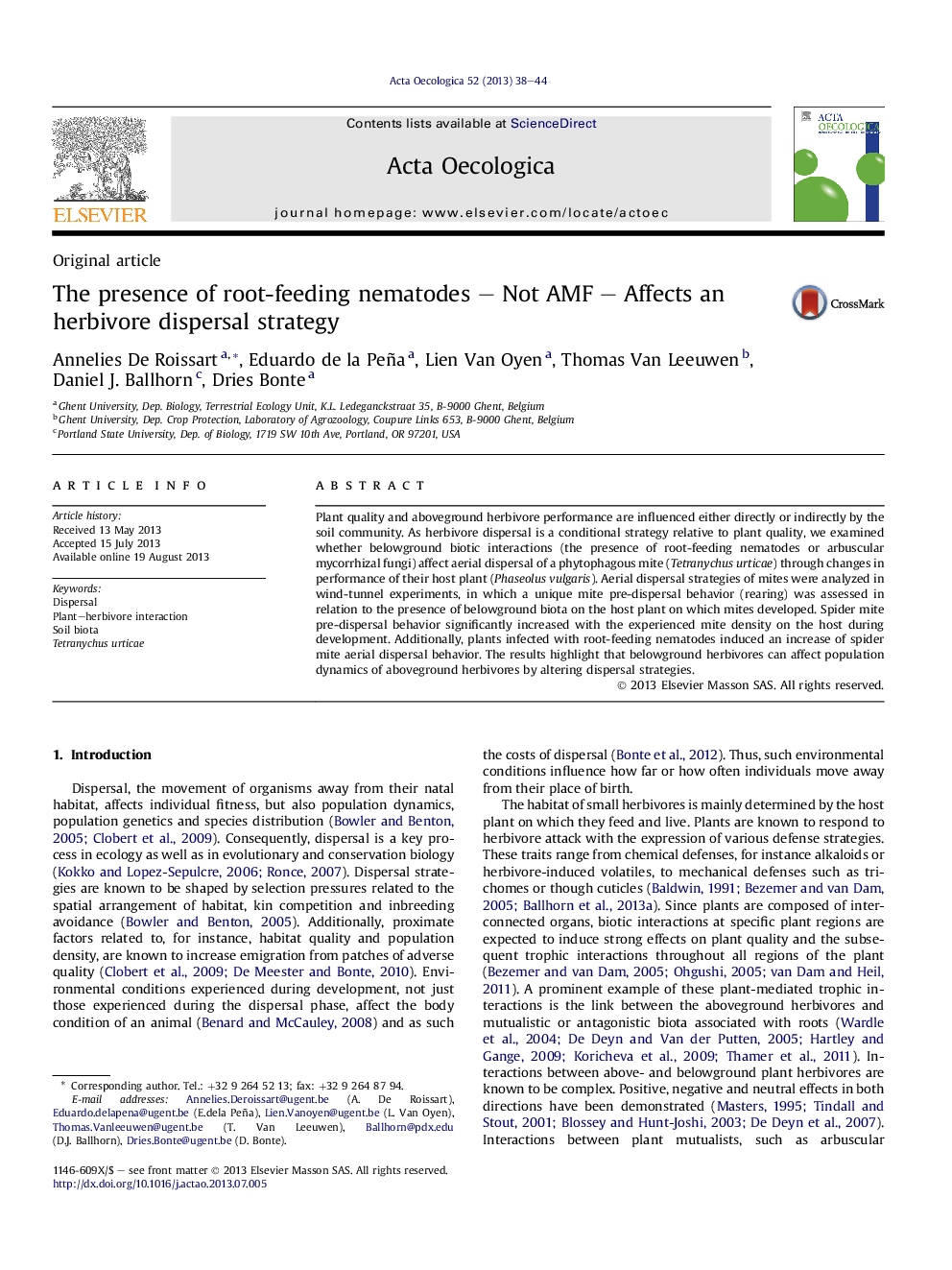| Article ID | Journal | Published Year | Pages | File Type |
|---|---|---|---|---|
| 4380884 | Acta Oecologica | 2013 | 7 Pages |
•Aboveground dispersal was assessed in relation to the presence of belowground biota.•A model system of spider mites (aboveground) and nematodes or AMF (belowground) was used.•Dispersal behavior increased with the experienced mite density on the host.•Root feeding nematodes induced an increase of aerial dispersal propensity.•Belowground herbivores affect population dynamics of aboveground herbivores.
Plant quality and aboveground herbivore performance are influenced either directly or indirectly by the soil community. As herbivore dispersal is a conditional strategy relative to plant quality, we examined whether belowground biotic interactions (the presence of root-feeding nematodes or arbuscular mycorrhizal fungi) affect aerial dispersal of a phytophagous mite (Tetranychus urticae) through changes in performance of their host plant (Phaseolus vulgaris). Aerial dispersal strategies of mites were analyzed in wind-tunnel experiments, in which a unique mite pre-dispersal behavior (rearing) was assessed in relation to the presence of belowground biota on the host plant on which mites developed. Spider mite pre-dispersal behavior significantly increased with the experienced mite density on the host during development. Additionally, plants infected with root-feeding nematodes induced an increase of spider mite aerial dispersal behavior. The results highlight that belowground herbivores can affect population dynamics of aboveground herbivores by altering dispersal strategies.
